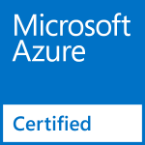
The Microsoft Azure Infrastructure as a Service (IaaS) platform enables applications to be easily provisioned in Microsoft’s cloud. Existing on premise applications can be seamlessly transitioned into Azure, allowing technology decision makers to benefit from the scalability, elasticity and shift of capital expenses to operational ones. When Microsoft Azure is incorporated into an organization’s multi-cloud strategy, many exciting benefits are realized!
- Azure makes higher agility possible for your business
- Azure makes Development Operations easier to achieve
- Azure makes integration with on premise applications and data simple
High availability and disaster recovery are of highest importance for application infrastructure since other important factors such as capacity and performance are negated if service either is not available or cannot quickly be recovered in the event of an instance failure or degradation. While the Azure platform provides native, basic application load balancing capabilities, Kemp’s Virtual LoadMaster (VLM™) for Azure greatly enhances and complements these capabilities by delivering true layer 7 Application Delivery.

When VLM™ for Azure is combined with Kemp LoadMaster's Global Server Load Balancing (GSLB) functionality known as GEO, high availability across on premise and cloud based application pools and intelligent global traffic distribution across multiple private cloud infrastructures and Azure becomes possible providing highly resilient, scalable and smart application deployments.
Kemp LoadMaster’s close relationship to Microsoft and commitment to enhanced integration with Microsoft platforms such as Azure and their suite of Enterprise productivity application results in optimal end-to-end user experience for mutual customers.
The Virtual LoadMaster Load Balancer/ADC for Azure is easy to provision, configure and manage right within Azure
- Easily provision from the Azure management portal
- Virtual LoadMaster assumes Public/Private endpoint functionality for services
- Connect Application Server instances to Virtual LoadMaster for Azure
Compare the Azure Load Balancer and Kemp Virtual LoadMaster for Azure
| Features | Azure | LoadMaster |
|---|---|---|
| Basic and Standard Tier VM support | Unchecked | Checked |
| Network Level L4 load balancing | Checked | Checked |
| Multiple application access with single IP | Limited | Checked |
| Pre-configured application templates | Unchecked | Checked |
| Web User Interface for ease of management | Limited | Checked |
| High Availability & Clustering | Limited | Checked |
| Hybrid Traffic Distribution | Checked | Checked (with advanced traffic distribution) |
| Scheduling methods | Round Robin Only | L4/L7 |
| Server Persistence | Limited | Checked L4/L7(Advanced options) |
| SSL Termination/Offload | Limited | Checked |
| Content Caching/Compression | Unchecked | Checked |
| Least Connection Scheduling | Unchecked | Checked |
| Server Name Indicator (SNI) | Limited | Checked |
| VM Resource Availability Awareness | Unchecked | Checked |
| Web Application Firewall Protection | Limited | Checked |
| Two Factor Authentication | Unchecked | Checked |
| Single Sign On | Unchecked | Checked |
| SmartCard(CAC) / X.509 Certificate Authentication | Unchecked | Checked |
| LDAP Authentication | Unchecked | Checked |
| Radius Authentication | Unchecked | Checked |
| Kerberos Constrained Delegation Support | Unchecked | Checked |
| Active Directory group based traffic steering | Unchecked | Checked |
| Header content switching | Limited | Checked |
| Header manipulation | Unchecked | Checked |
| Adaptive scheduling | Unchecked | Checked |
| OCSP Certificate Validation | Unchecked | Checked |
| SAML Authentication Support | Unchecked | Checked |
| TCP Multiplexing | Unchecked | Checked |
| Reverse Proxy | Limited | Checked |
Introducing Load Balancing in Microsoft Azure
Before we create a Virtual LoadMaster Virtual Machine (VM) in Azure, it is important to understand the network traffic flow so that VMs in Microsoft Azure can be configured appropriately.
Microsoft Azure IaaS deployments accept traffic only on published endpoints. Any request to access Microsoft Azure workloads passes through the default load balancing layer of the Microsoft Azure platform. To utilize the additional features of Virtual LoadMaster, deploy the Virtual LoadMaster for Azure.
Complete the following steps:
- First deploy the Virtual LoadMaster for Azure.
- Create all virtual machines (VMs) that need to be load balanced.
- Publish these VMs through the Virtual LoadMaster using Virtual Services and add the necessary rule(s) to the Azure Network Security Group(s).
By doing this, we receive all load balanced traffic on the LoadMaster VM and the logic of load balancing incoming connections will be applied as per the configured virtual service on Kemp’s Virtual LoadMaster for a given workload.
Frequently Asked Questions
- What is Azure Load Balancer?
Microsoft provides Azure load-balancing options and an application gateway service within the Azure platform. The core Azure Load Balancer is a Layer 4 service that supports Azure traffic distribution across multiple virtual machines or cloud services for high availability and reliability.
- Why use Azure Load Balancer?
Azure supports inbound and outbound configurations, enabling the management of traffic flows in both directions to maintain application uptime. It can load balance applications and services that operate wholly within Azure in addition to load balancing applications for users accessing them from outside Azure.
- What are the benefits of Azure Load Balancer?
- High availability – Increase the accessibility of applications and services, even after failures or during planned maintenance.
- Scalability – Enables organizations to handle increased traffic loads for efficient resource utilization and decreases bottlenecks and performance degradation.
- Performance improvements - Distributes traffic across multiple servers to reduce latency and helps improve application response time.
- When should I consider a third-party load balancer in Azure?
If basic load balancing is enough, Azure Load Balancer is a cost-effective and efficient solution. However, if advanced features like TLS/SSL termination or URL-based routing are necessary, consider a third-party alternative like LoadMaster for Azure.
- Is Kemp LoadMaster easy to deploy and manage in Azure?
Yes, the LoadMaster solution is easy to deploy and manage. It provides a unified big-picture view of load balancing across your multi-cloud and hybrid infrastructure deployments. LoadMaster for Azure provides equivalent and additional features to Microsoft’s offerings while enabling system administrators to use their skills across multiple cloud platforms and on-premises deployments.
Azure Resources
